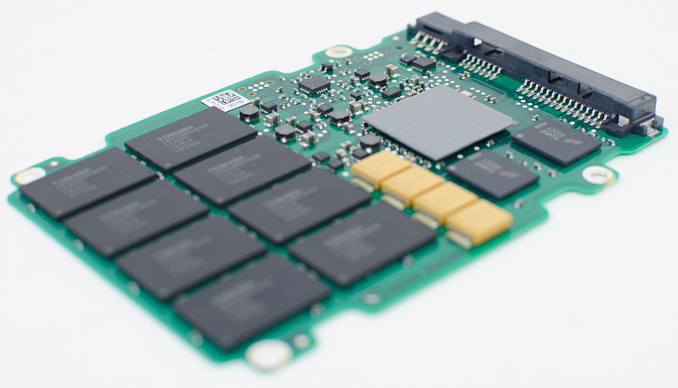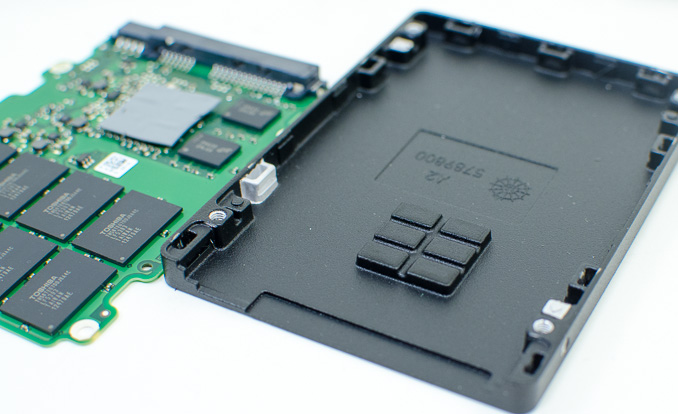The Seagate 600 & 600 Pro SSD Review
by Anand Lal Shimpi on May 7, 2013 8:00 AM ESTFinal Words
It's really good to see another SSD maker recognize the value of Link A Media's controller architecture and use it. Seagate's 600 SSD is a great drive, particularly thanks to how well it performs in a full drive scenario. The 600/600 Pro's peak performance is good, but combine it with great worst case scenario performance and you have the makings of a very good drive.
For client users I see no reason to consider the 600 Pro over the 600. If you need the power fail protection then the 600 Pro is your only option. Similarly if you need more endurance, the 600 Pro makes sense there as well. For everyone else, the 600 should do very well (in fact, it'll likely perform more consistently than many other drives I've seen branded as enterprise solutions).
There are two downsides to Seagate's 600/600 Pro: 1) idle power consumption and 2) no hardware encryption support. The first can be a deal breaker for notebook users. Unfortunately here Seagate is at the mercy of Link A Media. The LM87800 controller seems to have enterprise beginnings, where idle power just doesn't matter as much. Power consumption under load is great, but high idle power draw can really hurt in many light workload mobile applications. Desktop users won't be impacted. The lack of hardware encryption support and support for Microsoft's eDrive standard is less of an issue, but it's hard to not want those things after seeing what Crucial's M500 can do.
Long term I do wonder what will happen to the Seagate/LAMD relationship. Link A Media is now owned by Hynix, and last I heard Hynix didn't want drive makers using LAMD controllers without Hynix NAND. Obviously the 600/600 Pro were in development since before the acquisition so I wouldn't expect to see any issues here, but I get the impression that the successor to these drives won't be based on a Link A Media controller. It's no skin off of the 600's back for its successor to go a different route, but I worry that the best feature of the 600 may get lost in the process. What makes the 600 great is its balance of high peak performance with solid minimum performance. Performance consistency isn't as good as on Corsair's Neutron (another LM87800 drive) but it's far better than a lot of the drives on the market today. Ultimately what this means is you can use more of the Seagate 600's capacity than you could on other drives without performance suffering considerably. I usually recommend keeping around 20% of your drive free in order to improve IO consistency, but with LAMD based drives I'm actually ok shrinking that recommendation to 10% or below. There are obviously benefits if you keep more free space on your drive, but Seagate's 600 doesn't need the spare area as badly as others - and this is what I like most about the 600.
Of course the usual caveats apply. Although the LM87800 is a fairly well understood controller by this point, I'd still like to see how Seagate's validation and testing have done before broadly recommending the drive. I would assume the 600/600 Pro have been well tested given Seagate's experience in the HDD industry, but when it comes to SSDs I've learned to never take anything for granted. There's also the question of how regularly/quickly we should expect to see firmware updates for these drives, should issues arise. Again, I feel like Seagate will be better here than most first timers in the SSD market but these are all caveats I've applied in the past when dealing with a relative newcomer.












59 Comments
View All Comments
numberoneoppa - Tuesday, May 7, 2013 - link
It's too bad about the idle power consumption, but if the prices are decent, I might pick up a higher capacity variant to replace my 80GB m25 G2 in my desktop.ssj3gohan - Tuesday, May 7, 2013 - link
I don't think Anandtech has implemented their improved (DIPM-enabled) power consumption tests yet, so the idle figures here are pretty much meaningless. When it comes to market, check the datasheet for actual idle power consumption.Kristian Vättö - Tuesday, May 7, 2013 - link
Seagate's datasheet shows average idle power of 1.1W: http://images.anandtech.com/doci/6935/Screen%20Sho...lightsout565 - Wednesday, May 8, 2013 - link
Does anyone know how power consumption compares to the 128GB Samsung 830? In Anand's review of the 830 he mentions, "Samsung sampled the 512GB version of the SSD 830 so it's unclear how much the sheer number of NAND die impacts power consumption here." During the test of the 513GB version, it showed 1.22W at idle.Kristian Vättö - Wednesday, May 8, 2013 - link
The 128GB SSD 830 idles at 0.38W (I think the firmware is also newer, the 512GB had pre-production FW as far as I know). As always, you can find all our SSDs (and other components) in the Bench, here's the 128GB SSD 830:http://www.anandtech.com/bench/Product/533
cactusdog - Tuesday, May 7, 2013 - link
I don't understand why Seagate and WD were so slow in the SSD market. They should have a complete range of SSDs by now. They could have just rebranded OEM drives (if they didn't want to spend money) and would have sold millions just from their name alone. Like Kingston and others did...... I don't get it.Sabresiberian - Tuesday, May 7, 2013 - link
I wonder if the main HD manufacturers here were doing a bit of "American auto industry" thinking. Like "We sold all the gas guzzlers we could make before, how are we supposed to know the general population is going to want cars that get better gas mileage?" Chrysler and GM had to be bailed out twice for that kind of thinking.So, were Seagate and Western Digital thinking "We're selling all the HDs we can make, why should we get into SSDs?" I don't know, but it's an explanation that seems to fit, to my way of thinking anyway.
Powerlurker - Tuesday, May 7, 2013 - link
I think it's more that Seagate and WD have extensive expertise in manufacturing HDDs that can't be replicated by competitors and lots of industrial infrastructure that only they (and Toshiba at this point) have. Meanwhile, on the SSD front, they would be competing with any idiot on the Pacific Rim with a reference design and a pick-and-place line. SSDs are rapidly becoming commodity products at the consumer level and long term profitability in the segment requires you to have your own special sauce (controller technology, firmware expertise, a NAND fab, or some other unique advantage) which WD and Seagate don't really have at this point.Kristian Vättö - Tuesday, May 7, 2013 - link
While WD and Seagate lack the SSD expertise, they have the distribution channels and resources. Hynix is a good example of a company that has all the expertise they need to develop a competitive SSD but their distribution channel is lacking. Seagate, on the other hand, operates globally and can reach billions of potential buyers in a short period of time. Even if you have a good product, it's fairly meaningless if it can't reach most of the market. Hynix actually makes SSDs but they are doing absolutely nothing to market them and I bet they don't have many distributors in the US or other Western countries (NewEgg sells their SSDs but I haven't seen them elsewhere).Seagate also has tons of capital to invest on the SSD market. Like in the case of this SSD, they didn't just go with stock SandForce but chose LAMD and invested on specializing the firmware. On top of that, I'm pretty sure Seagate has fairly big NAND deals with Toshiba and Samsung to ensure a steady supply of NAND, which requires capital. There have already been NAND shortages in the market and this year it will get even tougher - Seagate has an advantage because they can buy a ton of NAND whereas smaller players lack the capital for that (and the bigger client you are, the more important you are for the company so big clients are prioritized when there's a shortage).
What would be a killer combination in the future is Seagate and Hynix combining their powers.
secretAgent! - Tuesday, May 7, 2013 - link
WD is coming out soon with SSD PCIe cards soon.... i've helped test them.... shhhh....